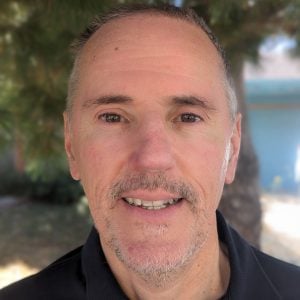This article is part of a series featuring Q&As with Ralph O’Connor Sustainable Energy Institute (ROSEI)-affiliated researchers. Next up is Branko Kosović, who joined ROSEI as an associate research scientist on July 1.
How did you first get involved with or learn about sustainability?

Branko Kosović
Branko Kosović (BK): I grew up in what is now Croatia, where it was emphasized from a young age that you shouldn’t be wasteful and that it’s important to care for the planet. Though I always had that in the back of my mind, that notion came to the forefront for me when I realized that the climate is changing and that humans are making that change more significant.
From a research perspective, I got an undergraduate degree in mechanical engineering in Croatia, and then I went to graduate school here in the United States, where I got my master’s in aerospace engineering. I became interested in turbulence. Fortunately, there were opportunities for me to study atmospheric turbulence. This is how I became involved in researching the atmosphere and its boundary layers, which has since become my main focus. My research didn’t necessarily focus on the climate; however being in that environment and seeing changes that were happening, I realized the importance of sustainability even more.
Why are you passionate about sustainability/renewable energy?
BK: Because we now see the effects of climate change daily and need to do everything we can to mitigate it. If average temperatures keep going up, by 2050, the impacts will be extremely significant, especially for communities that are less fortunate. That keeps my passion for the work we are doing, and I think, in general, having renewable resources for energy fundamentally makes sense rather than exploiting the Earth and deplete its resources.
How does your commitment to sustainability play out in your everyday life?
BK: When my wife and I moved to Baltimore from Colorado, we downsized to one car: a plugin hybrid. We are also trying to use public transportation as much as possible; in fact, we exclusively looked for apartments that were located near public transportation. I plan to come to work via public transportation as often as possible.
We also always aim to live close to work so that we don’t have to commute far. Not only does it save time but it also saves energy.
Tell us about your research, and what aspects currently or in the future tie into sustainable energy efforts.
BK: My academic background is in atmospheric turbulence and the actual atmospheric boundary layer. The atmospheric boundary layer interacts with the surface of the Earth, and virtually all human activity happens there. It’s important for humans and their relationship with the planet’s climate because that is where the impact of climate change is felt.
About 15 years ago, I was seeking opportunities to work on topics that contribute to sustainability, and at that time the wind energy industry was expanding in Europe. Turbines were getting bigger, and engineers began to realize that taller turbines encountered environments that they hadn’t considered, creating a need for atmospheric scientists to be involved with wind energy. In general, I think I am a pretty good link between engineers and atmospheric scientists.
Understanding how the atmospheric boundary layer affects larger turbines required a lot more research, so my focus became high-resolution simulations on supercomputers of the atmospheric boundary layer. More specifically, I focus on resolving turbulence in the boundary layer, which is important for assessing the performance of these big machines. Turbulence impacts power output as well as longevity of blades, too, so, it’s important to consider these factors when constructing windfarms.
Is there an article, book, or podcast that people can check out to help better understand the area you work in or your specific work?
BK: There is one book that I read when I started working in wind energy that I still go back to sometimes to understand how the field has evolved: Wind Energy in America: A History, by Robert Righter. The book should have a second edition because it was published in 2008, and there have been significant developments in the wind energy industry since then. However, it remains an excellent resource for anyone interested in learning about the evolution of wind energy.
What advice do you have for students who want to pursue careers in sustainable energy?
BK: Students should find what they are passionate about. There are many opportunities to work in this industry and I don’t see that changing anytime soon. Wind, solar, grid, carbon capture, etc.: There are so many directions to go in, but students’ impact will be much greater if they find what they are passionate about and apply themselves.
Also, today most researchers work in teams because it gives you a diversity of perspectives and expertise. It is important to be able to work in a team; it’s so much harder to work completely on your own. If a student finds a passionate team that they fit into, they should go for it.
Why did you choose to join the Hopkins sustainable energy community?
BK: JHU has a long tradition of excellence in working in atmospheric boundary layers and turbulence research. That is my long-term passion, so it’s a perfect fit from that perspective.
